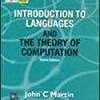Microwave Engineering by Annapurna Das
is an indispensable resource for learning the fundamentals of microwave engineering. It introduces readers to essential topics like electromagnetic theory, microwave components, and transmission lines, offering a solid foundation for further study. The book is structured to cater to both beginners and advanced learners, ensuring clarity in every concept.
One of its strengths is the detailed exploration of microwave circuits, systems, and components such as filters, amplifiers, and mixers. The author uses simple analogies and clear illustrations to make complex topics accessible, enhancing the reader’s understanding. The book also covers critical subjects like waveguides, coaxial cables, and microstrip lines, essential for designing communication systems.
Additionally, the book applies microwave engineering concepts to real-world applications such as radar, satellite communication, and medical instruments, showing their practical relevance. Numerous problems and exercises at the end of each chapter provide readers with opportunities to apply their knowledge, with solutions provided to encourage self-study and mastery of the material.
Microwave Engineering by Annapurna Das is perfect for students and professionals aiming to deepen their understanding of microwave technology. Whether you’re preparing for exams or designing microwave systems, this book will serve as an essential reference.








